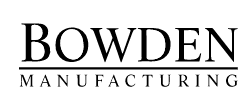Part 3 of 4
Marketing Your Manufacturing Business: Giving New Customers Your 3-Step Action Plan
Do You Clearly Tell Prospective Customers How Your Product or Service Works… and How to Get Started Working With You?
You could be losing out on new leads if you’re missing the 3-step plan on your website.
If we were to look at your Company website and ask the question, “How do I buy from them and what’s the next step?” would the answer be obvious? Most likely not. This lack of clarity and direction is preventing people from taking the necessary steps to engage with you.
Last week, we continued our four-part series on applying Donald Miller’s book, Building a StoryBrand, to Manufacturing companies. Using the StoryBrand framework, our Team at Bowden has overhauled the way we speak about our company and how we reach out to the marketplace. Hopefully, this series will help you skip some of the mistakes we made along the way.
If you’ve completed the Action Steps from the first two weeks, you’ve done the following:

This week, you’ll take the following action steps to help your Hero (the Customer) on their journey toward a successful outcome in solving their Problem.
The Plan
Explaining the process and making it easy to take the next step
Now that you’ve established your Company as the Guide, you need to tell the Hero what he or she needs to do to work with you to solve their Problem. You need to give them The Plan.
You’ve gotten their attention by describing their Problem and you’ve positioned yourself as a potential Guide to solving it, so they are starting to get interested. Providing a clear explanation of the process they’ll go through with you to solve their Problem will continue to stoke their interest and the idea that they might have found what they’ve been looking for after all!
Here’s the catch – the Plan can only have three steps.
Now of course we all know that there are more than three steps a Customer needs to take to work with you, but don’t worry, you’ll get to that later.
Unfortunately, if you talk about all the 10, 15, or 20+ steps in your process, you’ll overwhelm the prospective Hero and they’ll think it’s too difficult to move forward with you. Showing too many steps slows them down and forces them to picture too much of the process.
If you think about most stories, the Hero doesn’t spend much time in detailed planning. They tend to move quickly. If the story gets slow, the Hero (and the audience!) loses interest, and we don’t want that to happen. They meet the Guide and the Guide provides them with a very simple plan to get them moving and that’s what you want to do with your Hero, too.
Create a 3-Step Plan
Step 1 is the very first thing they need to do. This step gets the process of working together started. Here are some examples of what that could be:
- A Project Review
- An Initial Consultation Meeting
- A Drawing Review
- A Requirements Overview Meeting
Step 2 identifies the most important thing that your Company is going to do as a part of helping them solve the Problem. This step is you working the Problem with them to get on the path towards success. Here are some examples of what that could be:
- Establish Project Plan & Begin Manufacturing
- Create Process Flow for Approval & Get Started in Production
- Finalize Budget & Timeline for Project Kickoff & Execution
- Develop the Key Project Steps & Finalize Launch Plan
Step 3 is the foreshadowing of the Winning Outcome they’ll experience once they have executed the Plan. Here are some examples of what that could be:
- Receive Your Manufactured Products On Time & On Budget
- Assemble the Products for Your Customer and Ship
- Get Timely Reports on Progress & Finished Parts on Schedule
- Accepting Thanks from Your Customer after Delivering as Expected
While it won’t always be easy to narrow it down to three steps, doing so will make the Plan super clear even though there will obviously be many items happening under each of the big steps. They’ll be plenty of time later to dive into the details, but only after they have engaged with you and your Team.
Here’s an example of what we uncovered for ourselves to be our three-step Plan straight from our website:
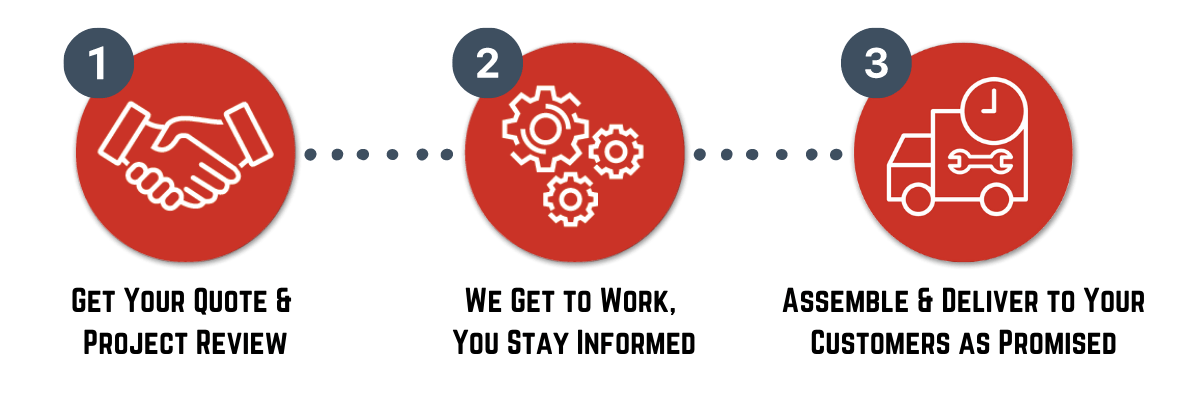

- The First Step is what the Customer needs to do First
- The Second Step is the Most Important Thing that Your Company will do to Solve the Problem
- The Third Step is Their Winning Outcome You’re Helping Them Reach
Create a Call to Action
Now that you’ve outlined the Plan for the Hero (your prospective Customer), you need to tell them exactly what Action they need to take as their first step. Creating that very clear initial Action they need to take to get the ball rolling begins the process of them solving their Problem.
This Call to Action must be very specific and it must be an Action that actually moves them towards taking action on their solution, not just asking them if they want more information. Since you’ve laid out the plan for them, it’s time for them to take action that will move them forward in a meaningful way. Practically speaking, you must ask your Customer to buy your product or they won’t do it.
To do this, there are two main types of Calls to Action (CTA):
- Direct Call to Action (DCTA)
- Transitional Call to Action (TCTA)
A Direct Call to Action (DCTA) moves them to the next step in the buying process. They’ve learned enough that they want to get started solving their problems right away.

People will go where you tell them to go. If you’re vague or weak, they’ll be confused and they won’t move forward.
Here’s an example of what we established for ourselves as a CTA straight from our website: “Get A Quote”
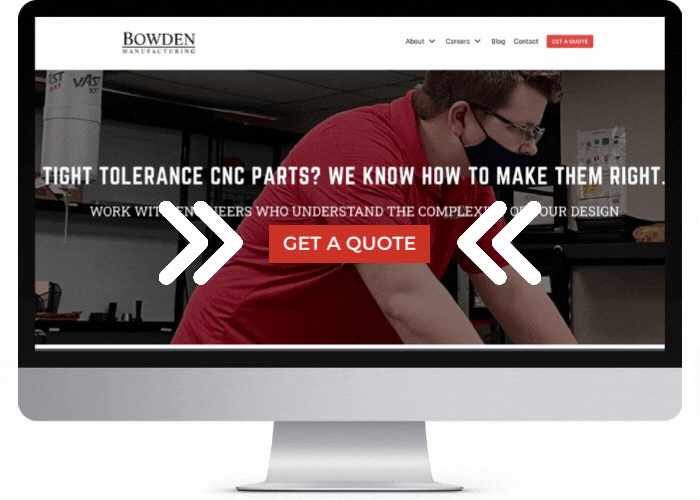
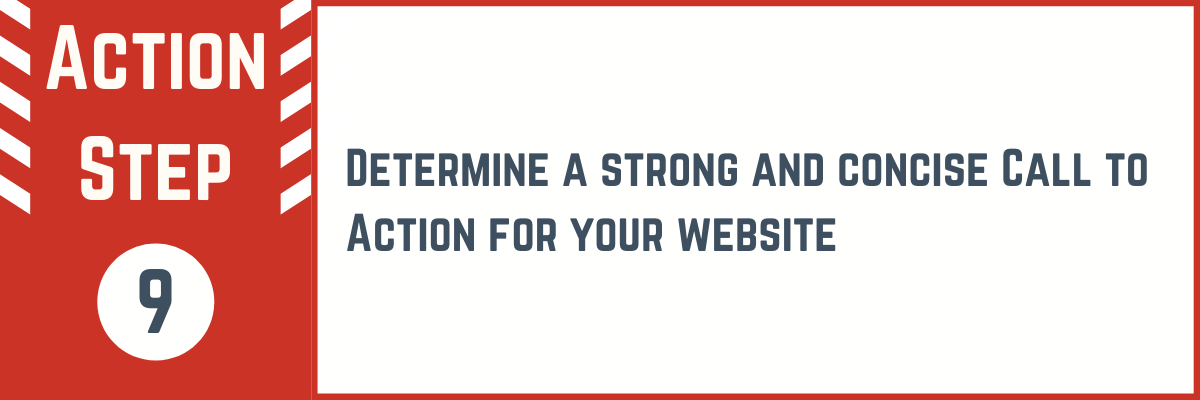
Create a Lead Generator
Let’s say, however, that not all prospective Customers might be ready to buy just yet. Rather than just having them poke around on your website (they might do that anyway!), you can give them an opportunity to take a smaller step forward. That’s where the Transitional Call to Action (TCTA) comes in. You can provide them an option for more information and something of value they can download in exchange for their email address…..in the StoryBrand framework it’s called a Lead Generator.
A Lead Generator is designed to pique their interest, give them some helpful information in line with the Problem they’re trying to solve, and provide enough value that they’ll give you their email address. By providing them value, you’re starting to earn trust from your prospective Customer and you’re starting to create a situation of reciprocity….you’ve given them something of value so they start to feel a sense of obligation to you.
Examples of Lead Generators include:
- An informative PDF
- An instructive video
- An E-Book
- A Webinar
A couple of guidelines for your Lead Generator:
- Make it Short – Enough to be of value, but not so long that they won’t get through it.
- Give it a Cover – It makes it look even more valuable.
- Solve a Specific Problem – Solving a small problem near to their main Problem earns trust and helps you qualify them as a prospective Customer
Here’s an example of what we created for ourselves as a Lead Generator straight from our website: A Manufacturing Supplier Checklist – A PDF of a Rating Tool to Evaluate Manufacturing Vendors

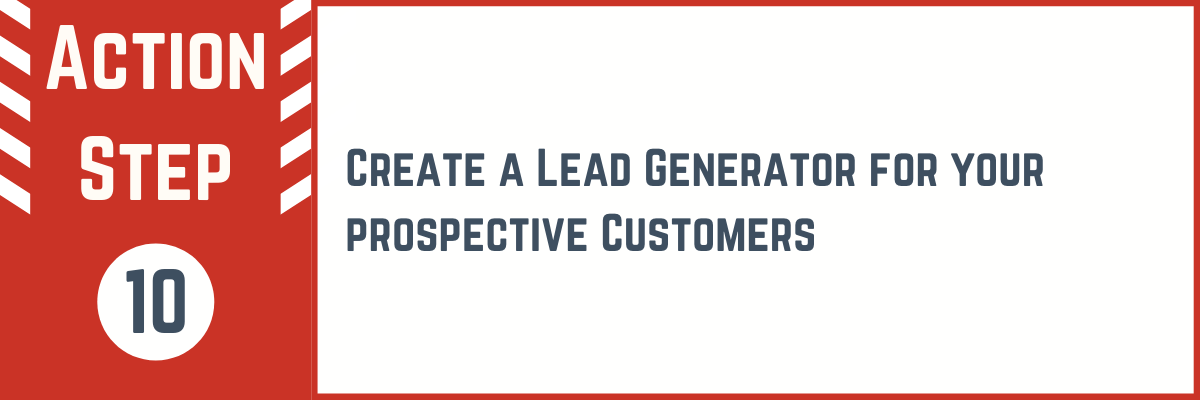
Make sure it is short, has a cover, and solves a specific problem near to the main Problem you solve for your prospective Customers
Direct Website Visitors to Your Lead Generator
With a Lead Generator created, you can then use a Transitional Call to Action (TCTA) for prospective Customers to “opt-in” to receive the value you’re providing. You’ll get their email address with unspoken permission to stay in contact with them in the future.
Here are some examples of solid TCTAs:
- Download the PDF
- Get the E-Book
- Register for the Webinar
- Watch the Video
Making both the DCTA and TCTA buttons very obvious on your website will ensure they will always be able to take immediate action when they are ready.
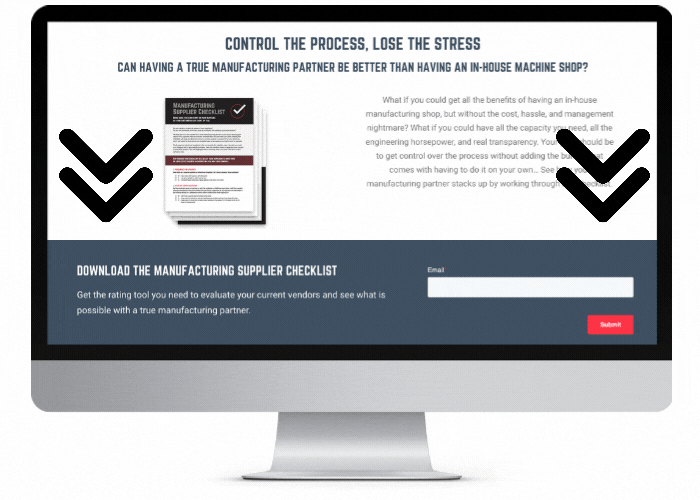
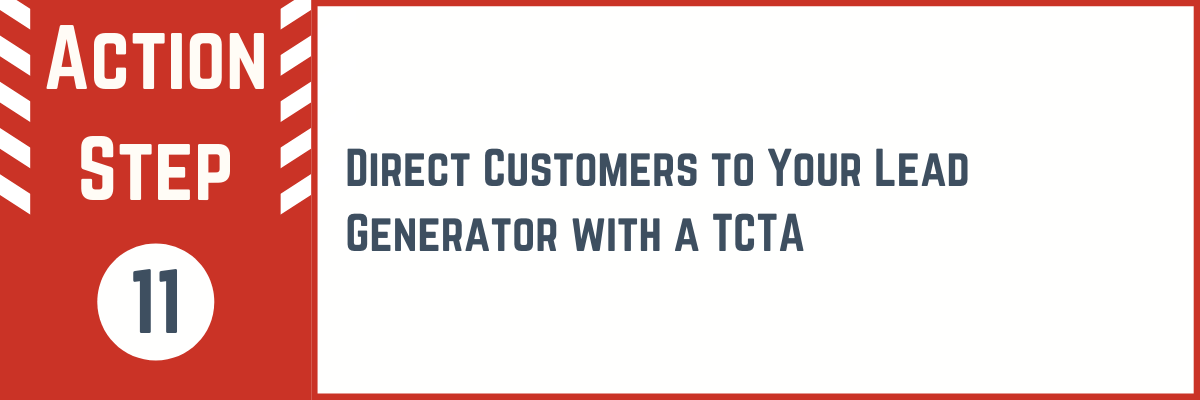
Ensure that you’re set up to have them give you their email address in exchange for the value you’re providing.
Establish the Plan, Call Them to Action, and Engage New Customers
In the StoryBrand framework, once you’ve established your Company as the Guide, you need to let them know the Plan. Narrow it down to three steps that are clear so they know how to start, what you’ll do to help them solve their Problem, and what life can look like for them once they’ve gotten to the other side of it.
Establishing the Plan, however, isn’t enough. You must Call them to Action. Clear direction as to how they move forward is critical, otherwise, they won’t take the next step. This is done with a strong Direct Call to Action (DCTA).
Additionally, developing a valuable Lead Generator provides an option that engages that prospective Customer, starts to earn their trust, and only costs them their email address. You use a Transitional Call to Action (TCTA) to direct them to take that step.
Stay Tuned for Insight into How to Market Your Manufacturing Business!
In the final blog in the series, we’ll complete the StoryBrand framework by helping describe both Success and Failure they might experience as a result of their actions to deal with their Problem. By helping them picture the potential of what their life will feel like after solving their Problem, and contrasting it with the potential continued failure if they don’t take action, you’ll set them up to complete the Story loop for their lives and engage with you to solve their Problem.
Take this time to complete the Action Steps 8-11, and you’ll be ready for the next stage of the process.

